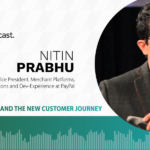As the land that gave us buy now, pay later (BNPL), it’s hard to picture Australia as a laggard in digital transformation, but merchants and payments partners there still have dots to connect.
In “The 2022 Global Digital Shopping Playbook: Australia Edition,” a PYMNTS and Cybersource collaboration and part of a larger six-nation study of over 13,000 consumers, we asked nearly 2,100 Australian consumers about digital experiences in the country. For the second year running, Australia earned a low index score, largely for frictions still found in shopping and payments.
In an On the Agenda discussion, PYMNTS’ Karen Webster was joined by Brian McGrory, vice president and head, merchant sales and acquiring, Australia, New Zealand and South Pacific at Visa, and Reuven Barukh, CEO at Sydney-based payments service provider Live Payments, as the trio talked over what it will take to get Australia’s index scores up in digital shopping experience.
McGrory pointed to the extant opportunity, noting that Australia’s economy has yet to shake off the COVID-19 jitters.
“I think we’re the nation of lockdowns across the world,” he said. “It has really meant that shoppers in Australia have had to rethink how they shop. I think the click-and-collect phenomena has really started to increase across a broad section of retail categories. There’s lots of advantages, not just for the shopper, but also for the retailer.”
Click-and-collect is Australian for buy online, pick up in-store (BOPIS), and it’s one of the ways this nation of roughly 25 million people is getting a lift from the digital shift.
With “The 2022 Global Digital Shopping Playbook: Australia Edition” finding that 38% of eCommerce shoppers in Australia who used click-and-collect on their most recent eCommerce purchases “often or always bought more products while picking up in-store,” it shows how the ecosystem benefits from digital connections.
Get the study: The 2022 Global Digital Shopping Playbook: Australia Edition
McGrory said to optimize this, retailers “really need to think about mobile-first design” in the physical stores as hybrid eCommerce and brick-and-mortar experiences become the norm.
“We are seeing, through the study, that Australian retailers are lagging when it comes to offering this seamless digital experience,” McGrory said, adding that high smartphone usage is changing this.
Barukh spoke up for the little guy, saying, “In the SMB segment, for them to move as rapidly as some of these larger retailers, maybe that’s where the lagging effect is coming into Australia. You’ve got retailers where there’s integrated POS only at 30% of merchants. So, 70% of SMBs are using standalone payment terminals not integrated into their POS systems.”
That offers opacity for inventory management and creates other obstacles to vital functions needed for seamless consumer movement between digital and physical channels, he said.
“Brick-and-mortar retailers are now realizing they also need to have a digital presence,” Barukh said. “Competition is increasing, technology is increasing, and they will have access to that technology promptly and be able to provide similar services to much larger national retailers.”
Good Friction, Bad Friction
Unpacking why the nation that innovated BNPL is falling behind the larger digital transformation, Barukh said some basic fixes need to happen to enable full digital experiences.
Looking to SMBs that generate “the majority of payments volume … here in Australia,” he said, the typical setup is to use one acquirer or merchant service provider for physical stores and another for online experience, “which disenfranchises the ability to provide that frictionless customer experience and switch between online in-store and merge the two together.”
Saying that no single partner could do everything, McGrory still concurred with Barukh in that, “If the retailer’s not used to managing that level of partners — not suppliers, but partners — to be able to deliver these experiences,” it gets complicated and possibly counterproductive.
Which is not to say that all friction is bad friction, even if it does impact one’s index score. “The 2022 Global Digital Shopping Playbook: Australia Edition” also found that 38% of the eCommerce shoppers in Australia using click-and-collect for their most recent online purchases often or always bought more products while picking up orders in-store.
See also: 2022 Global Digital Shopping Index Shows Australian Merchants Forced to Play Digital Catchup
“If I’m lined up for 10 minutes [for click-and-collect], I’m not just going to just stand there. I invariably pick up a couple of extra things whilst I’m waiting,” McGrory said, adding that digitally influenced in-store sales make up about five times that of eCommerce purchases.
Barukh said taking full advantage of this hybrid model requires reimagining the entire business: “Put in the right technology, find the right partners, manage those partners and make sure that you have a seamless experience. SMBs in particular are currently lagging in that regard.”
How does he advise going about this?
“Work with acquirers, payfacs, payment service providers that can actually provide you with a true omnichannel experience,” Barukh said. “I want to emphasize as well about making sure that you have wallet technology in your shopping carts, and having one-click checkout. Those simple things can decrease cart abandonment by over 30%.”
Optimizing Hybrid Experience
There is a divide between what enterprise merchants and SMBs can deliver in terms of an omnichannel experience that adds up to happy shoppers and higher index scores, and merchants need a mobile-first mentality to match consumers’ unwavering expectations.
Barukh said Live Payments is “hearing very clearly from independents that when shoppers come in, they view them not very differently to the large national supermarkets. The shoppers are expecting smartphone-enabled technology, loyalty, gifting, scan and go, and all that technology that the larger retailers are bringing to the market.”
Webster noted that digital tech is accomplishing this for smaller operators by leveling the playing field, melding digital tech with the curated experiences SMBs are prized for.
Barukh said that’s still “in an embryonic phase here in Australia. What we see is [shoppers] simplistically view it as merging an online and a brick-and-mortar experience and making sure that customers can engage with them both online and in-store and have a similar experience.”
As more consumers use smartphones as remote controls for connected shopping, things like price matching are helping even the odds, Barukh said, adding, “Price-matching price wars can only go so far and for so long.”
Instead, personalization, customer engagement and service “is more important, but it needs to be on par with the price matching in order to retain customers.”
Partners are of course critical in all of this, especially when it comes to nonnegotiables like payments choice for the digital-centric shoppers of 2022.
Barukh said, “I think it’s the acquirer’s responsibility to provide as many payment types as possible. Payments is moving so rapidly that it’s very difficult for a typical retailer to keep up with the pace and understand what they should be offering to their customers.”
McGrory took it a step further, saying, “There’s the acquirer, there could be a payment facilitator in front of that as well. What we’re are seeing now with the exponential growth in eCommerce is being able to provide all these payment options online is an easier tech and experience to build than if it was all still focused on in-store shopping.”
Both agreed that voice payments and conversational commerce hasn’t yet caught on in Australia as much as it has in some other nations studied, but that’s coming as Australia plays catch up.
Simplifying it somewhat, McGrory said, “Get the strategy right, get the experiences and the competitive position you want to be in, and then go out and look for partners and enabling partners — it’s all about enablement — to be able to help you [experience] for your shoppers.”
https://www.pymnts.com/cbdc/2022/digital-dollar-projects-sandbox-to-study-cbdc-x-border-payments/partial/






